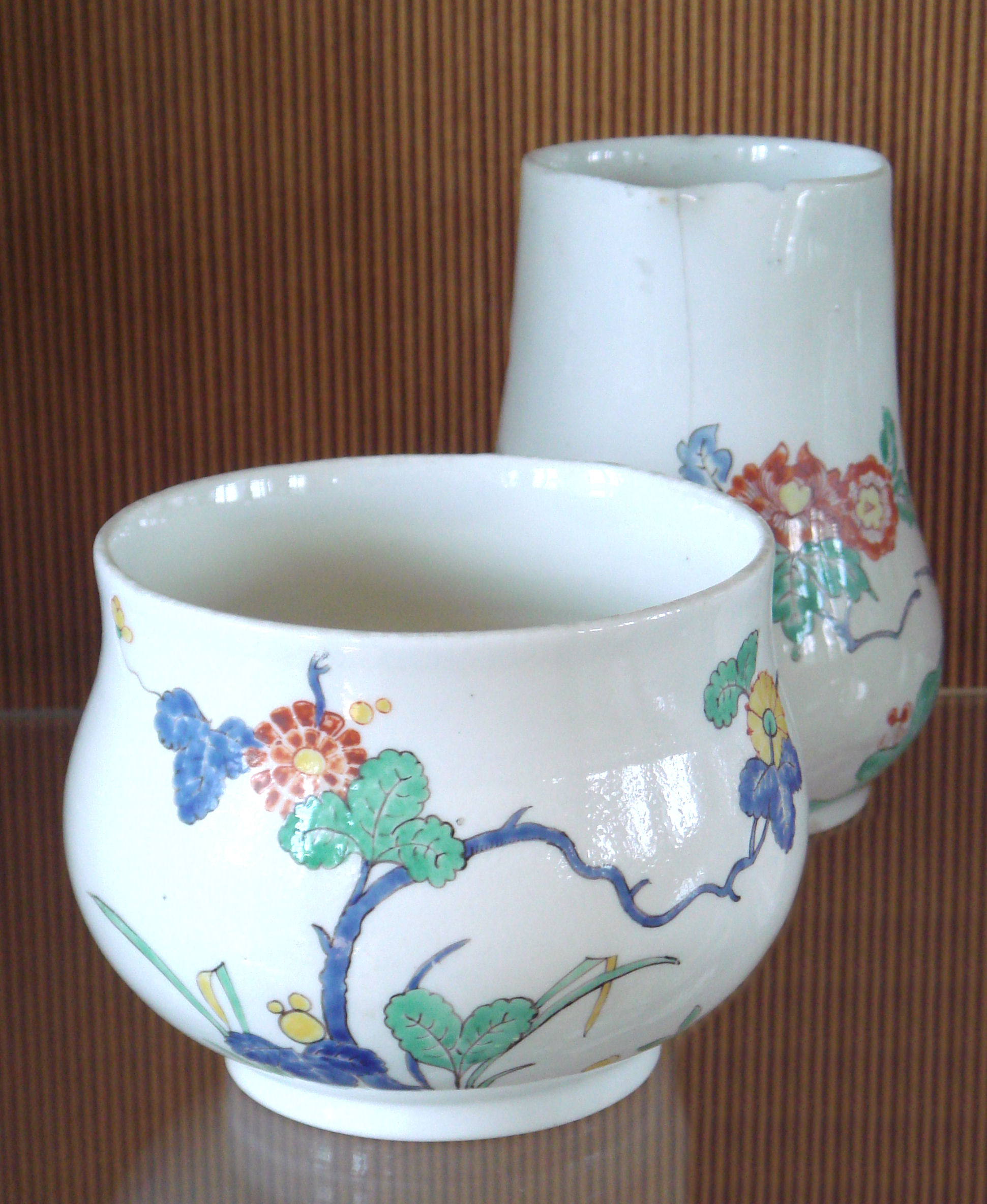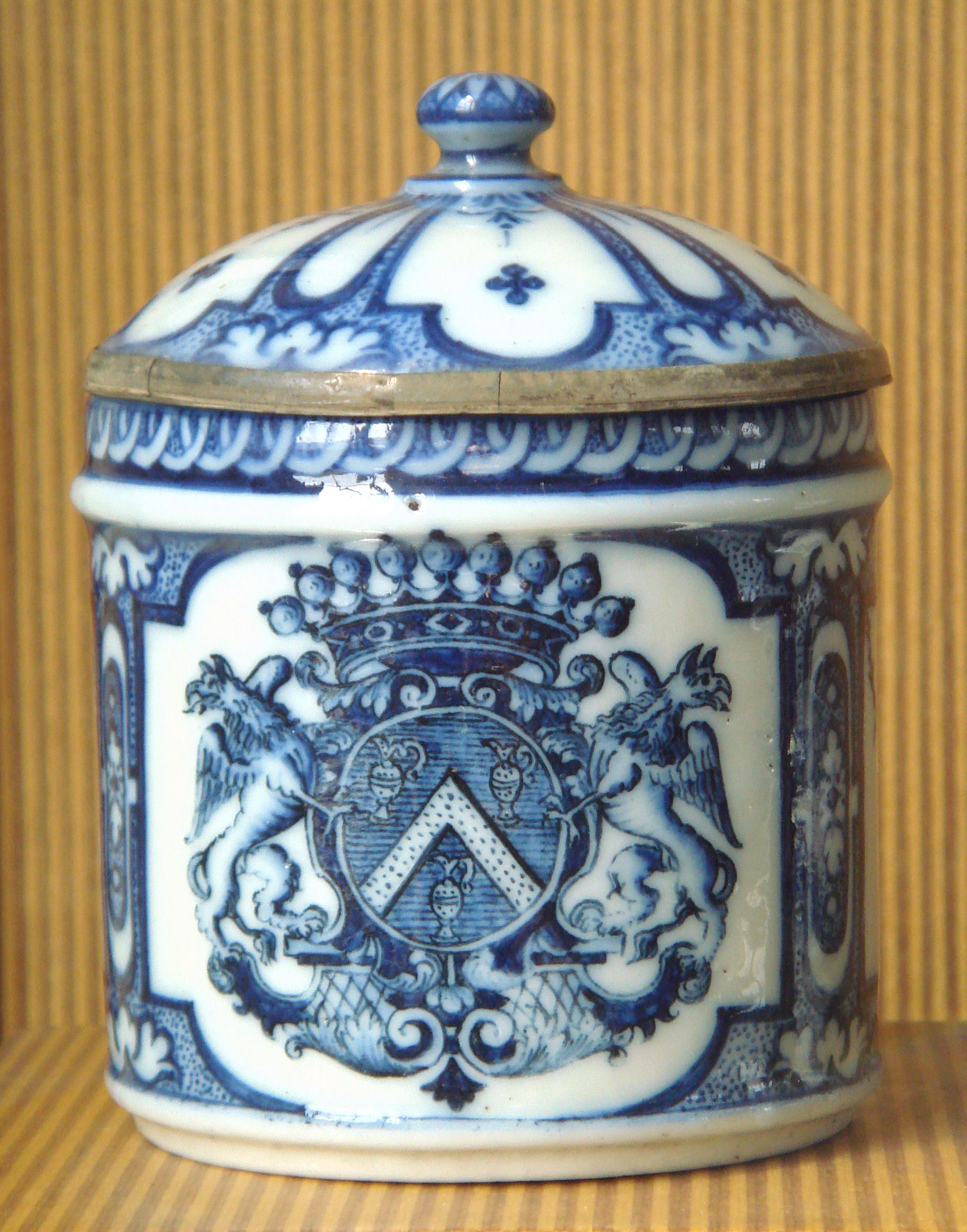|
Ciquaire Cirou
Ciquaire Cirou (c. 1700-1751) was a French industrialist and porcelain manufacturer. He was originally a member of the Saint-Cloud manufactory, where he was a painter, specializing in soft-paste porcelain. By a letter dated 5 October 1735, Louis XV (reg 1715-74) allowed Ciquaire Cirou to make porcelain "in imitation of Japanese porcelain" for 20 years. The Chantilly manufactory itself had already been established since c.1725 however. Ciquaire Cirou thus became the director of the Chantilly manufactory until his death, under the protection of Louis Henri, Duke of Bourbon. Through his tenure, the style of the Chantilly manufactory, described as the "First period" (1725-1751), almost entirely focused on imitations of Chinese and Japanese wares, such as the ''Kakiemon'' style. See also * French porcelain French porcelain has a history spanning a period from the 17th century to the present. The French were heavily involved in the early European efforts to discover the secrets of m ... [...More Info...] [...Related Items...] OR: [Wikipedia] [Google] [Baidu] |
Chantilly Porcelain Sugar Bowl Kakiemon Style 1725 1751
Chantilly may refer to: Places France *Chantilly, Oise, a city located in the Oise department **US Chantilly, a football club *Château de Chantilly, a historic château located in the town of Chantilly United States * Chantilly, Missouri, an unincorporated community * Chantilly (Charlotte neighborhood), a neighborhood in Charlotte, North Carolina *Chantilly, Virginia, an unincorporated area located in Fairfax County, Virginia **Chantilly High School, a public high school located in Chantilly, Virginia and the Fairfax County Public Schools system *Chantilly (Montross, Virginia), a historic archaeological site near Montross, Virginia Other *Battle of Chantilly, a battle in the American Civil War in Chantilly, Virginia *Chantilly Codex, a late medieval manuscript, and the primary source of music in the ''ars subtilior'' style *Chantilly Conferences, during World War I *Chantilly cream, a synonym for whipped cream *Chantilly lace, a handmade bobbin lace from Chantilly, Oi ... [...More Info...] [...Related Items...] OR: [Wikipedia] [Google] [Baidu] |
Porcelain
Porcelain () is a ceramic material made by heating substances, generally including materials such as kaolinite, in a kiln to temperatures between . The strength and translucence of porcelain, relative to other types of pottery, arises mainly from vitrification and formation of the mineral mullite within the body at these high temperatures. Though definitions vary, porcelain can be divided into three main categories: hard-paste, soft-paste, and bone china. The category that an object belongs to depends on the composition of the paste used to make the body of the porcelain object and the firing conditions. Porcelain slowly evolved in China and was finally achieved (depending on the definition used) at some point about 2,000 to 1,200 years ago; it slowly spread to other East Asian countries, then to Europe, and eventually to the rest of the world. Its manufacturing process is more demanding than that for earthenware and stoneware, the two other main types of pottery, and it ... [...More Info...] [...Related Items...] OR: [Wikipedia] [Google] [Baidu] |
Saint-Cloud Manufactory
Saint-Cloud porcelain was a type of soft-paste porcelain produced in the French town of Saint-Cloud from the late 17th to the mid 18th century. Foundation In 1702, Philippe I, Duke of Orléans gave letters-patent to the family of Pierre Chicaneau, who were said to have been making porcelain as "perfect as the Chinese" since 1693. Chicaneau's factory was a pioneer in the manufacture of porcelain in Europe, where there had been many attempts to copy Chinese porcelain. Saint-Cloud developed a frit ("a mixture of a flux, sand and chalk") which was close, although not similar, to Asian porcelain. Blue-and-white porcelain The porcelain produced in Saint-Cloud was influenced by late Ming blue and white porcelain and its motifs were based on Chinese originals. The typical underglaze blue painted Saint-Cloud porcelain, says W.B. Honey, "is one of the most distinct and attractive of porcelains, and not the least part of its charm lies in the quality of the material itself. It is rarely o ... [...More Info...] [...Related Items...] OR: [Wikipedia] [Google] [Baidu] |
Louis XV
Louis XV (15 February 1710 – 10 May 1774), known as Louis the Beloved (french: le Bien-Aimé), was King of France from 1 September 1715 until his death in 1774. He succeeded his great-grandfather Louis XIV at the age of five. Until he reached maturity (then defined as his 13th birthday) on 15 February 1723, the kingdom was ruled by his grand-uncle Philippe II, Duke of Orléans, as Regent of France. Cardinal Fleury was chief minister from 1726 until his death in 1743, at which time the king took sole control of the kingdom. His reign of almost 59 years (from 1715 to 1774) was the second longest in the history of France, exceeded only by his predecessor, Louis XIV, who had ruled for 72 years (from 1643 to 1715). In 1748, Louis returned the Austrian Netherlands, won at the Battle of Fontenoy of 1745. He ceded New France in North America to Great Britain and Spain at the conclusion of the disastrous Seven Years' War in 1763. He incorporated the territories of the Duchy of Lorr ... [...More Info...] [...Related Items...] OR: [Wikipedia] [Google] [Baidu] |
Chantilly Porcelain
Chantilly porcelain is French soft-paste porcelain produced between 1730 and 1800 by the manufactory of Chantilly in Oise, France. The wares are usually divided into three periods, 1730-51, 1751-1760, and a gradual decline from 1760 to 1800. The factory made table and tea wares, small vases, and some figures, these all of Orientals. Foundation Outbuildings were purchased in March 1730 on the banks of the small river Nonette near the extensive park of his château de Chantilly by Louis Henri de Bourbon, prince de Condé, the prince of the blood exiled from Court, who founded the factory. At this period, the capital investment required for establishing a porcelain manufactory was so extensive that a royal or aristocratic patron was essential; only in Britain was early porcelain manufacture capitalized by the merchant class. The elite wares of Chantilly were intended to compete with Saint-Cloud porcelain, a pioneer among French soft-paste porcelain manufactures, and other smal ... [...More Info...] [...Related Items...] OR: [Wikipedia] [Google] [Baidu] |
Louis Henri, Duke Of Bourbon
Louis Henri, Duke of Bourbon (Louis Henri Joseph; 18 August 1692 – 27 January 1740), was a French nobleman and politician who served as Prime Minister of France from 1723 to 1726. As a member of the reigning House of Bourbon, he was a '' prince du sang''. Louis Henri was the second child and eldest son of Louis III, Prince of Condé, and Louise Françoise de Bourbon, the eldest daughter of King Louis XIV and his mistress Madame de Montespan. Following the death of his father in 1710, he became head of the Bourbon-Condé cadet branch of the House of Bourbon. As such, he was entitled to be known as Prince of Condé, but he used the title Duke of Bourbon instead and was known at court as ''Monsieur le Duc''. After his maternal grandfather died in 1715, Louis Henri became a member of the regency council led by Philippe II, Duke of Orléans, the regent for the new minor king Louis XV. In 1723, Louis Henri succeeded the Duke of Orléans as chief minister to Louis XV. He nego ... [...More Info...] [...Related Items...] OR: [Wikipedia] [Google] [Baidu] |
Kakiemon
is a style of Japanese porcelain, with overglaze decoration called "enameled" ceramics. It was originally produced at the factories around Arita, in Japan's Hizen province (today, Saga Prefecture) from the Edo period's mid-17th century onwards. The style shares much in common with the Chinese "Famille Verte" style. The quality of its decoration was highly prized in the West and widely imitated by major European porcelain manufacturers during the Rococo period. Kakiemon is a term that generates some confusion, being the name of a family, one or more kilns, and a brightly-coloured overglaze style broadly imitating Chinese wares. The style originated with the family, whose kilns were the main producers of it, but other kilns also made it, and the Kakiemon kilns made other styles. Both the palette and style, and very probably the kiln, were in place by the 1680s. The style is a sub-type of what is called in the West Imari ware, the overglaze coloured variety of the broader grouping ... [...More Info...] [...Related Items...] OR: [Wikipedia] [Google] [Baidu] |
French Porcelain
French porcelain has a history spanning a period from the 17th century to the present. The French were heavily involved in the early European efforts to discover the secrets of making the hard-paste porcelain known from Chinese and Japanese export porcelain. They succeeded in developing soft-paste porcelain, but Meissen porcelain was the first to make true hard-paste, around 1710, and the French took over 50 years to catch up with Meissen and the other German factories. But by the 1760s, kaolin had been discovered near Limoges, and the relocated royal-owned Sèvres factory took the lead in European porcelain design as rococo turned into what is broadly known as the Louis XVI style and then the Empire style. French styles were soon being imitated in porcelain in Germany, England, and as far afield as Russia. They were also imitated in the cheaper French faience, and this and other materials elsewhere. This dominance lasted until at least 1830. Before the French Revolution in ... [...More Info...] [...Related Items...] OR: [Wikipedia] [Google] [Baidu] |
Porcelain Of France
French porcelain has a history spanning a period from the 17th century to the present. The French were heavily involved in the early European efforts to discover the secrets of making the hard-paste porcelain known from Chinese export porcelain, Chinese and Japanese export porcelain. They succeeded in developing soft-paste porcelain, but Meissen porcelain was the first to make true hard-paste, around 1710, and the French took over 50 years to catch up with Meissen and the other German factories. But by the 1760s, kaolin had been discovered near Limoges, and the relocated royal-owned Manufacture nationale de Sèvres, Sèvres factory took the lead in European porcelain design as rococo turned into what is broadly known as the Louis XVI style and then the Empire style. French styles were soon being imitated in porcelain in Germany, England, and as far afield as Russia. They were also imitated in the cheaper French faience, and this and other materials elsewhere. This dominance las ... [...More Info...] [...Related Items...] OR: [Wikipedia] [Google] [Baidu] |

.jpg)





